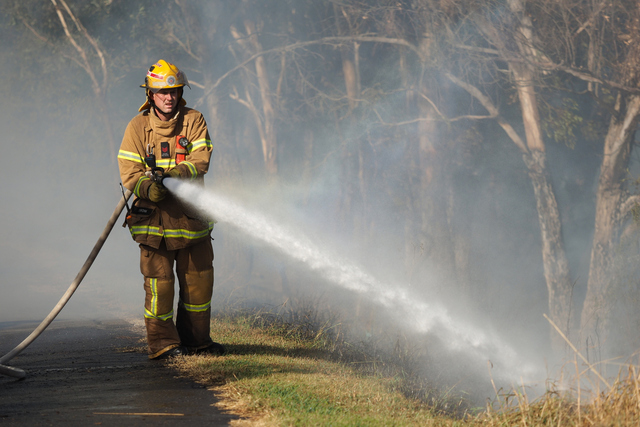By Kath Gannaway
“IF I see locusts coming over that hill … that’s the end of it.”
Yarra Valley Racing CEO Brett Shambrook was trying to be philosophical about the natural and man-made challenges which have plagued the club over the past two years.
The 2009 fires, the battle to keep the training facility at Yarra Glen and now floods which have not only wiped out their lynchpin Cup Day meeting, but washed away their new $400,000 sand track.
On Sunday morning as Mr Shambrook and his staff waded through flood waters he admitted his first inclination was to simply cry.
It was a sentiment shared by John O’Neill, president of the Healesville Amateur Racing Club which is also facing as yet unknown financial losses as a result of the floods.
Both men will spend the next week assessing the damage and the flow-on effect on the spring and summer racing season.
“There is no way we could consider running an event for 12,000 people on Tuesday,” Mr Shambrook told the Mail on Monday.
“The car parks are underwater and there is a lot of damage to the tracks, buildings, pathways and the roads.
“It was like a tsunami coming through and it will take a fair effort to get on top of it,” he said.
The Cup Day meeting is the club’s biggest meeting of the year.
“It sets up us for the remainder of the year and it’s a big financial loss to the club. It really puts you behind the eight-ball.”
The loss of the sand track is more than just a financial blow. It’s demoralising.
“The sand track is gone; it’s down the Yarra somewhere,” Mr Shambrook said.
“We had to work really had to get the funding to keep the training here and it’s a bit unclear at the moment where we stand with insurance, or alternatively, if Racing Victoria will see fit to replace it.
Mr Shambrook said it was not only the club which would feel the pinch. “We would have had 350 employed tomorrow who aren’t going to get work. It’s not just the club it impacts on, it’s bus companies, the baker, butcher … everyone,” he said.
At Healesville, while the scale may be lower, the impact on the volunteer-run club is no less devastating.
“It’s done a lot of damage; washed out the internal roads, destroyed the carpets in the jockeys’ and stewards’ rooms, and washed through the first-aid room and secretary’s office,” Mr O’Neill said.
He was heading down on Monday to check on the refrigerators. With a smaller than anticipated crowd at the Derby Day meeting the day before, he said there was a lot of food in the refrigerators which if lost, could mean a loss of more than $20,000.
“It’s disheartening to do all this work to get ready for the first race of the season and have to start all over again,” he said.
Like the floodwaters which were still running through the bar and canteen as Mr O’Neill spoke with the Mail on Monday, the impact will flow on.
“It not only affects us, it affects the whole community. We had to cancel a market a few weeks ago and will have to cancel next Sunday’s now. Those markets would have the potential to kick in another two or three thousand dollars to our community grants scheme so it’s a substantial loss,” Mr O’Neill said.
Failing a locust invasion, both men say they are determined to soldier on with their Christmas meetings coming up.
“It’s heartbreaking, but once the water has receded we’ll be back out there getting ready for our Christmas meetings.
“We need everyone to come and support us,” Mr Shambrook said.
What next – locusts?- Washed away — the $400,000 sand track which secured the future of Yarra Glen as a training track is gone. 55919
Digital Editions
-

Police say preparation and prevention key ahead of fire season
With the Fire Danger Period imminent for the Yarra Ranges, local police are urging residents to be prepared and aware of the dangers of fire…






